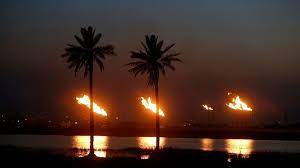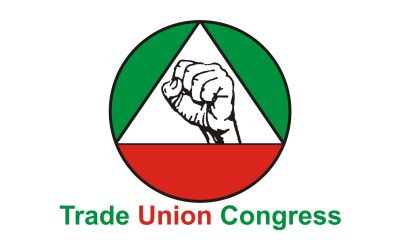Oil & Energy
World’s Recoverable Oil Resources Shrinks By 9%

Every year and following the publication of the BP Statistical Review, Rystad Energy releases its own assessment to provide an independent, solid and clear comparison of how the world’s energy landscape changed last year. Our 2021 review deals a major blow for the size of the world’s remaining recoverable oil resources, but it also shows that oil production and consumption can align with climate goals.
Rystad Energy now estimates total recoverable oil resources at 1,725 billion barrels, a significant reduction of last year’s estimate of 1,903 billion barrels. Out of this total, which shows our estimate of how much oil is technically recoverable in the future, about 1,300 billion barrels are sufficiently profitable to be produced before the year 2100 at a Brent real oil price of $50 per barrel.
“In this scenario, global production of oil and natural gas liquids will fall below 50 million barrels per day by 2050. Exploring, developing, processing and consuming this amount of commercially extractable oil will lead to gross greenhouse gas emissions of less than 450 gigatonnes of CO2 from now until 2100. This is compliant with IPCC’s carbon budget for global warming limited to 1.8?C by 2100,” says Rystad Energy’s Head of Analysis, Per Magnus Nysveen.
This year’s review of global recoverable oil resources is based on resources modelled at well level rather than field level. This more detailed approach has removed 178 billion barrels from the expected accounts as the confidence level for decline rates has increased with the amount of new information gathered.
Our updated report also includes revisions for proved reserves. Here Rystad Energy applies a consistent set of conservative probabilities, as opposed to official reporting by authorities which is deemed less consistent. Among other findings, we see significant differences among OPEC members on the longevity of proved reserves, ranging from well below 10 years for some members to almost 20 years for Saudi Arabia and the UAE.
In terms of absolute volumes removed from non-OPEC producers, remaining recoverable resources in the US are now reduced to 214 billion barrels, losing 30 billion barrels from last year’s estimate. China suffers the second-largest loss with its remaining recoverable resources now limited to 50 billion barrels, a down wards revision of 26 billion barrels. Mexico’s recoverable resources are third on the loss list, downgraded by 12 billion barrels to 26 billion barrels. Most of this year’s revisions are driven by lower upside potential from shale oil drilling due to complex geology and the need for extensive exploration campaigns and improved fracking technologies.
The remaining recoverable resources of OPEC countries are reduced by 53 billion barrels to 741 billion barrels. Iran and Saudi Arabia have the largest revisions, losing 11 billion barrels each, with Saudi recoverable oil volumes now calculated at 288 billion barrels and Iranian volumes at 101 billion barrels. Iraq follows in third place, seeing its recoverable resources shrink by 8 billion barrels to 110 billion barrels.
In this revision, Saudi Arabia keeps the throne as the producer with the largest volumes of recoverable oil resources (288 billion barrels). The US follows second (214 billion barrels), Russia third (149 billion barrels) and Canada fourth (138 billion barrels).
In Central and South America, Brazil remains first in recoverable resources, sitting on 83 billion barrels (down 2 billion barrels from last year’s update). In Europe, with 19 billion barrels (down by 1 billion barrels in this update), Norway remains ahead of the UK, whose volumes have shrunk by 2 billion barrels to 10 billion. In Africa, resource leader Nigeria lost 6 billion barrels and its recoverable resources are now estimated at 20 billion barrels.
Unlike most countries in our analysis, Australia’s estimated recoverable oil resources are now seen higher by 2 billion barrels at 23 billion barrels.
The time stamp of Rystad Energy’s newest resource assessment is 1 January 2021. In other words, our analysis illustrates where the remaining recoverable resources of each country stood at the beginning of this year.
Culled from Rystad Energy
Oil & Energy
NSCDC’s Anti-Vandal Squad Uncovers Artisanal Refinery In Rivers Community

The Anti-Vandal Squad of the Nigeria Security and Civil Defence Corps (NSCDC), Rivers State Command, has uncovered yet another local refinery situated at Adobi-Akwa settlement in Etche Local Government Area of Rivers State.
The State Commandant, Basil Igwebueze, disclosed this while speaking to journalists shortly after the tour of the Illegal site.
Represented by the Head, Anti-Vandal Squad, CSC Peters Ibiso, Igwebueze said the squad made the discovery following a tipp off, expressing regret that no arrest was made as the boys fled the site upon sighting the squad.
The cammandant’s representative took the newsmen across a tick forest of about 6-7 kilometers from the main town.
The team sighted where the pipeline vandals tapped into the Well Head of yet to be ascertained multinational company, connected their galvanised pipes to several cooking pots, heat up the crude to produce Automotive Gas Oil (AGO).
In his words, “Upon receiving a tip-off, the Anti-Vandal operatives swung into action to uncover this illegal oil bunkering site. They were in this forest for two days having cordoned the area, unfortunately, the perpetrators upon sighting our men took to their heels, but investigation is still ongoing to effect the arrests of such defiant elements”.
The Anti-Vandal Unit Head further narrated the operation techniques of the operators of local illegal refineries from the point of extraction of crude through vandalism of oil pipelines to cooking in various ovens where the content is subjected to high temperature and transmitted through pipes to reservoirs for storage and onward trans- loading to buyers.
While insisting that the command would not relent in the fight against illegal dealings in petroleum products, he urged the public to have more trust in the NSCDC by providing actionable intelligence that would enhance possible arrest of economic saboteurs in the State.
“Our commitment to continuously work in tandem with the prosecutorial mandate of the corps in order to rid the State of economic saboteurs remains unchanged. We value our informants and most especially the intelligence driven tip-off received from time to time.
“It is also our duty to ensure that our source of information are not disclosed so as to protect our informants. It is therefore our delight that the public will continue to have confidence and trust in us as we together protect the nation’s critical national assets and infrastructure from dare devil vandals”, he stated.
By: Lady Godknows Ogbulu
Oil & Energy
Oil Fund Withdrawals Suggest Extended Price Rally

The world’s largest crude oil exchange-traded fund has bled over $2 billion in less than a year. And it i
s not due to investors finding greener pastures elsewhere with other ETFs; it is the siren call of soaring prices that is prompting this mass exodus.
The WisdomTree Brent Crude Oil exchange-traded commodity had assets under management of some $2.5 billion last summer, according to Bloomberg. Now, the publication reports, this is down to $396 million, with withdrawals accelerating over the past few days.
In that, withdrawals seem to be following price trends. Brent earlier this month topped $90 per barrel and, after a short pause earlier this week, is back above that threshold again following the latest Israeli strike on the Gaza Strip amid reports about a possible ceasefire.
While it is true that prices are currently driven higher mainly by geopolitical events, fundamentals are also at play. A growing number of forecasters are updating their predictions for benchmarks this year on expectations of resilient demand and increasingly tighter supply. And investors are following the trend.
Even those who have not sold their ETF holdings in order to invest more directly in the rally are benefitting. That same WisdomTree Brent Crude Oil ETC generated returns of over 13 percent during the first quarter of the year as opposed to an average 8.8% gain in the S&P 500.
The WisdomTree exchange-traded commodity became the world’s largest oil fund at the beginning of last year. The fund saw inflows of over $1 billion, which poured in as the deflation in oil prices that had begun in late 2022 extended into the new year. Now, the trend has reversed and it has reversed strongly.
The WisdomTree Brent Crude Oil ETC is not the only fund seeing outflows. The U.S. Oil Fund, which used to be the world’s biggest oil fund before the WisdomTree inflows last year and is now the world’s biggest oil fund once again, also saw a flurry of investor exits as benchmarks climbed higher.
According to Bloomberg, the fund’s assets under management currently stand at $1.3 billion, down from some $5 billion during the pandemic.
In further evidence that oil makes money, the Middle East is about to become the only region in the world with three trillion-dollar sovereign wealth funds. The Abu Dhabi Investment Authority is worth $993 billion, Bloomberg reported in March, while the Saudi Public Investment Fund and the Kuwait Investment Authority are breathing down its neck.
Meanwhile, investment in transition-related stocks is on the decline, according to data reported by Reuters. The S&P Global Clean Energy Index is down by 10% since the start of the year. In comparison, the S&P 500 Energy Index, which comprises Big Oil names, has gained 16.3%.
The data shows that investors are growing wary of all the promises made by transition advocates as evidence mounts that these were not based on due diligence. Wind and solar stocks suffered a crash last year when this first became clear.
Now, we are witnessing a continued awakening among investors to the challenges and the realistic potential of transition technology and alternative energy sources.
“With conventional energy having its own bull run, I think the alternative funds will struggle for the foreseeable future, and we shall see what the election brings”, the Managing Director of capital markets at Phoenix Capital Group Holdings told Reuters.
The comment summarizes the challenging situation for alternative energy investment and highlights the rebound of interest in oil and gas, much to the chagrin of decision-makers on both sides of the Atlantic.
In both Europe and the U.S., things can get even worse for the transition after the respective elections—in June for European Parliament and in November for U.S. President. It will certainly be an interesting year in energy.
Slav writes for oilprice.
By: Irina Slav
Oil & Energy
CNG Initiative: FG Targets 25,000 Jobs, $2.5bn Investment

The Programme Director and Chief Executive, Presidential Compressed Natural Gas Initiatives, Michael Oluwagbemi, has announced the Federal Government’s plan to target over 25,000 jobs and $2.5 billion worth of investment by 2027.
Oluwagbemi made this known during the Presidential CNG stakeholders’ engagement workshop held at BOVAS Auto-Gas Filling Stations, Ajibode Bus-Stop, in Ibadan, Oyo State capital, at the weekend.
He stated that the initiative, which was part of palliative measures to ease the burden of the removal of fuel subsidy, would attract enormous investment and job creation as well as impact positively on the lives of Nigerians.
Meanwhile, he called on Nigerians to embrace the new initiatives by the Federal Government as part of palliatives to cushion the effect of the removal of fuel subsidy in the country.
“On October 1, 2023, when the President gave his speech, he announced that the Presidential CNG initiatives are going to be rolled out as part of palliatives on the removal of fuel subsidy.
“One of our major concerns is to make sure that the transition for the transportation sector is a cheaper, safer, and more reliable source of energy.
“In the coming weeks, we are going to be announcing the conversion incentives programme which will enable Nigerians currently using PMS and Diesel fuel vehicles to be able to convert their vehicles at designated places across the country at a discounted price based on certain pre-qualification under the palliative programme of the Federal Government”, he said.
On the value chain of the initiative, Oluwagbemi explained that the Federal Ministry of Finance is acquiring tricycles and buses that would be assembled and manufactured in Nigeria, with more than five automobile firms being activated.
“The value chain of the programme starts with every one of us. From the point of converting your vehicle, you have created the demand for natural gas.
“If your vehicle is converted by technicians and refuelled by autogas workshops across the country, then you are creating jobs for civil engineers and technicians. You’re creating jobs for the upstream in terms of upstream activities associated with oil and gas.
“And in line with the programme, the Federal Ministry of Finance is acquiring a number of tricycles and buses that will be assembled and manufactured in Nigeria. More than five of our automobile firms have been activated. So, you can see that in terms of job creation, the opportunities for Nigerians are enormous.
“The President has said we need to convert one million vehicles by 2027. We need 1,000 conversion shops and we need over 3,000 filing stations just like this. You can imagine the level of investment required for this.
“In order to sustain one million vehicle conversions by 2027, we need 25,000 technicians. So, the job creation potential is an opportunity for job creation in addition to our gross domestic product, $2.5 billion worth of investment to be mobilised in the next four years and of course more than $25 billion added to our GDP”, he said.
Oluwagbemi further called on Nigerians to embrace the new initiatives by the Federal Government as part of palliatives to cushion the effect of the removal of fuel subsidy in the country.
The representative of BOVAS Filling Station, a private investor in the Presidential CNG Initiatives, Temitope Samson, said, “We have worked with the regulators, we are also working with the Presidential Initiatives on CNG to make sure that standard safety is adhered to. We have also worked with the Standard Organisation of Nigeria to ensure that we have a standard accepted internationally.
“Our role is to ensure that there is availability of CNG across the nation, and to also ensure we have enough kits and tanks that are converted for people to use as many as possible, and to ensure safety and to train others so that anywhere they get to, they have very safe conversion”.
Recall that last year, President Bola Tinubu approved the Presidential Compressed Natural Gas initiative(PCNG-i)
This initiative aims to not only introduce more than 11,500 new CNG-enabled vehicles and provide 55,000 CNG conversion kits for existing vehicles that depend on Premium Motor Spirit but also promote local manufacturing, assembly, and job creation.
-

 News2 days ago
News2 days ago524 Firms Bid For NRC’s 2024 Capital Procurement -Okhiria
-
Politics2 days ago
How We Saved N2.3bn From LG Reforms – Diri
-
Sports2 days ago
WADA Plans Review Of Failed Tests
-

 News2 days ago
News2 days agoTUC Wants FG To Pay Wage Award For March, April
-
Nation2 days ago
Fubara Has Rekindled Rivers Hope-Former Envoy
-
Rivers2 days ago
Students Want IAUE VC Confirmed
-
Entertainment2 days ago
Halliday Attributes Collaboration Hindrance To Sentiments, Others
-
News2 days ago
How Ex-HoS, Oyo-Ita, Others Diverted N3bn To Private Companies -Witness

